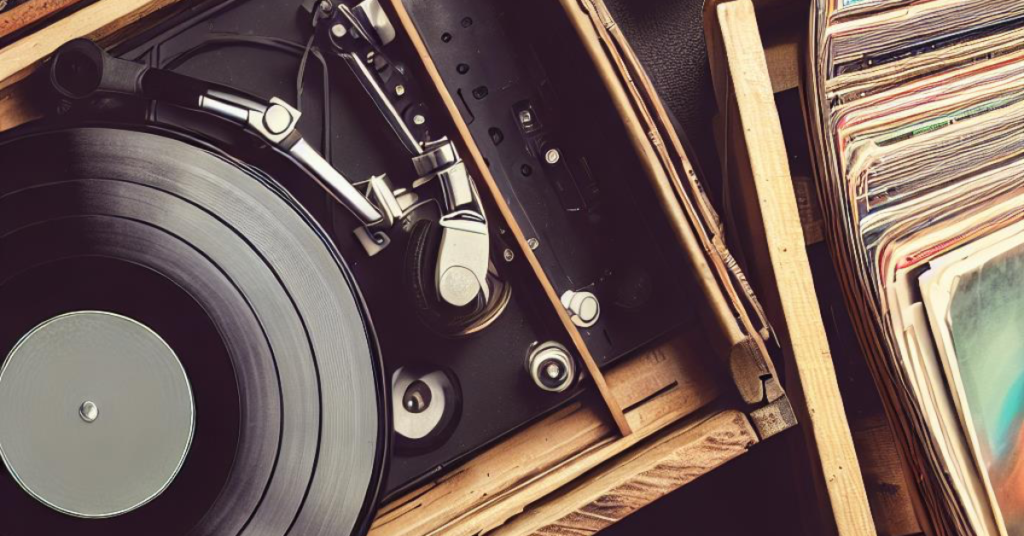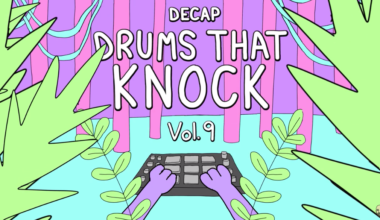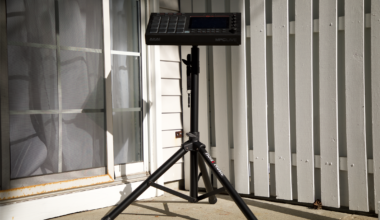
In an era where everything seems to be just a click away, where convenience is king and streaming services are the crowned princes, you’d think that physical music formats would be gathering dust in the attic of obsolescence. But hold onto your turntables, folks! They’re not only surviving in this digital jungle but also making quite a splash. Yes, you read that right. Vinyl records and other physical formats are making a comeback, and it’s not just your hipster friend fueling the trend.
Imagine this: It’s like seeing a T-Rex at your local park, not as a statue, but a living, breathing creature, casually munching on a tree. That’s how astonishing this trend is in the music industry. In the world of ones and zeros, the tangible, touchable, and nostalgic physical formats are making their presence felt, and how!
According to the Global Music Report 2023, physical formats are experiencing a resurgence, and it’s not just a blip on the radar. It’s a full-blown revival, a testament to the timeless allure of the physical medium in our increasingly digital world.
So, let’s dive into this intriguing plot twist in the music industry’s narrative, where the underdog is stealing the limelight and the ‘old’ is becoming the ‘new’ again. Buckle up, because this is going to be a groovy ride!
The Vinyl Revival: A Spin Back in Time
Remember when you thought vinyl records were as outdated as your grandma’s rotary phone? Or as irrelevant as a floppy disk in the era of cloud storage? Well, it turns out they’re more like the bell-bottom jeans of the music world – they’ve come back in style and are strutting their stuff on the runway of the music industry.
According to the report, vinyl sales have been growing steadily, and they’re not showing signs of slowing down. It’s like watching a black and white movie suddenly burst into color. Vinyl, once considered a relic of the past, is now a vibrant part of the music scene, spinning its way into the hearts of both old and new generations.
The numbers don’t lie. The report shows a significant uptick in vinyl sales, proving that this isn’t just a passing fad. It’s a full-on vinyl revival. It’s like watching a phoenix rise from the ashes, or better yet, seeing your favorite band from the ’70s make a comeback tour.
And it’s not just about the numbers. The vinyl revival is also about the experience. There’s something about the ritual of sliding a record out of its sleeve, placing it on the turntable, and gently dropping the needle into the groove. It’s a tactile and auditory experience that digital music just can’t replicate. It’s like choosing to read a hardcover book instead of an e-book, or savoring a home-cooked meal instead of ordering takeout.
So, next time you see a vinyl record, don’t dismiss it as a thing of the past. It’s very much a thing of the present, spinning its way into the future. And who knows? You might just find yourself caught up in the vinyl revival, one spin at a time.
The Physical Format Phenomenon: More Than Just a Nostalgic Trip
But wait, there’s more! It’s not just vinyl that’s making a comeback. Other physical formats are also seeing a resurgence. It’s like a 90s reunion tour, but instead of boy bands, it’s CDs and cassettes. It’s like walking into a time machine and coming out in an era where mixtapes were the language of love and CD collections were a prized possession.
According to the report, physical formats accounted for a significant portion of the global music market. It’s like finding out that not only is the underdog still in the race, but they’re also gaining ground.
CDs, once thought to be on the brink of extinction, are also making a surprising comeback. It’s like seeing a rainbow on a cloudy day, unexpected but delightful. CDs offer a certain tangibility and permanence that digital files can’t. They’re like postcards in an email world, offering a physical connection that resonates with many music lovers.
And let’s not forget about cassettes. Yes, you heard that right, cassettes! Those small rectangular objects that you probably last saw in your parents’ attic. They’re back in the game too. It’s like seeing a unicorn in the wild, rare and magical. Cassettes offer a sense of nostalgia and novelty that’s appealing to both older audiences who grew up with them and younger audiences who find them intriguingly retro.
So, whether it’s the warm sound of vinyl, the compact charm of CDs, or the retro cool of cassettes, physical formats are making their presence felt in the music industry. They’re not just surviving in the digital age, they’re thriving. They’re the music industry’s version of a blockbuster sequel, proving that sometimes, the follow-up can be just as exciting as the original.
Why the Comeback? The Allure of Tangible Physical Formats in a Digital World
Now, you might be scratching your head, wondering, “Why are people going back to physical formats in the age of streaming?” It’s like choosing to ride a horse to work when you have a Ferrari in the garage. Well, the reasons are as varied as the album covers in a record store, and they’re all part of the charm of this unexpected comeback.
Firstly, there’s the nostalgia factor. Physical formats, like vinyl records, CDs, and cassettes, take us on a trip down memory lane. They’re like time machines, transporting us back to simpler times when making a mixtape was a labor of love and flipping through album covers at a record store was a favorite pastime. They remind us of a time when music was not just something we listened to, but something we experienced.
Then there’s the sound quality. Audiophiles will tell you that the sound of vinyl is unparalleled. It’s like comparing a home-cooked meal to fast food. Sure, the latter is quick and convenient, but it just doesn’t have the depth and richness of the former. The warm, rich sound of a vinyl record spinning on a turntable is music to an audiophile’s ears, quite literally.
But it’s not just about nostalgia or sound quality. It’s also about the physicality of the medium. In a world where music is often consumed in the form of invisible digital files, physical formats offer a tangible connection to the music. Holding a vinyl record or a CD in your hands, examining the album cover, reading the liner notes – these are experiences that digital music can’t replicate. It’s like reading a physical book versus an e-book. The story might be the same, but the experience is different.
Finally, there’s the element of discovery. In the age of algorithms and curated playlists, there’s something uniquely satisfying about stumbling upon a hidden gem in a record store or rediscovering an old favorite in your CD collection. It’s like finding a treasure in an old chest, unexpected and thrilling.
So, while it might seem counterintuitive in our digital age, the comeback of physical formats makes perfect sense when you think about it. They offer a different, more tactile way of experiencing music, one that resonates with many music lovers. And as the report shows, this trend is not just a nostalgic whim. It’s a significant movement that’s reshaping the music industry.
The Future of Physical Formats: A Spin into Tomorrow
So, what does this mean for the future of music? Will we see a return to the golden age of vinyl? Or is this just a nostalgic phase that will pass? It’s like trying to predict the end of a gripping novel when you’re only halfway through.
But if the current trends are anything to go by, physical formats are not just a relic of the past. They’re a vibrant part of the music industry’s present. And who knows? They might even play a key role in its future.
The resurgence of physical formats is a testament to the enduring appeal of the tangible in our increasingly digital world. It’s like the resurgence of handwritten letters in the age of emails. There’s something about the physicality, the tangibility, that digital formats just can’t replicate.
And let’s not forget the role of collectors and enthusiasts. For them, physical formats are more than just a medium for music. They’re artifacts to be collected, cherished, and displayed. They’re like stamps or coins, each with their own story and value. This collector’s culture is likely to continue fueling the demand for physical formats.
Moreover, the music industry is recognizing the value of physical formats. From special edition releases to album bundles that include vinyl, CDs, and cassettes, artists and record labels are tapping into the trend. It’s like chefs who recognize the value of traditional cooking methods even as they embrace modern techniques.
So, while we can’t predict the future with certainty, one thing is clear. Physical formats, against all odds, have carved out a space for themselves in the music industry. They’ve spun a comeback story that’s as compelling as any chart-topping hit. And as they continue to spin, they’re not just playing music. They’re playing the soundtrack to a movement that’s redefining how we consume music.
So, next time you’re about to dismiss vinyl records or CDs as outdated, remember this: in the music world, what’s old can become new again. And that’s a tune we can all dance to.





